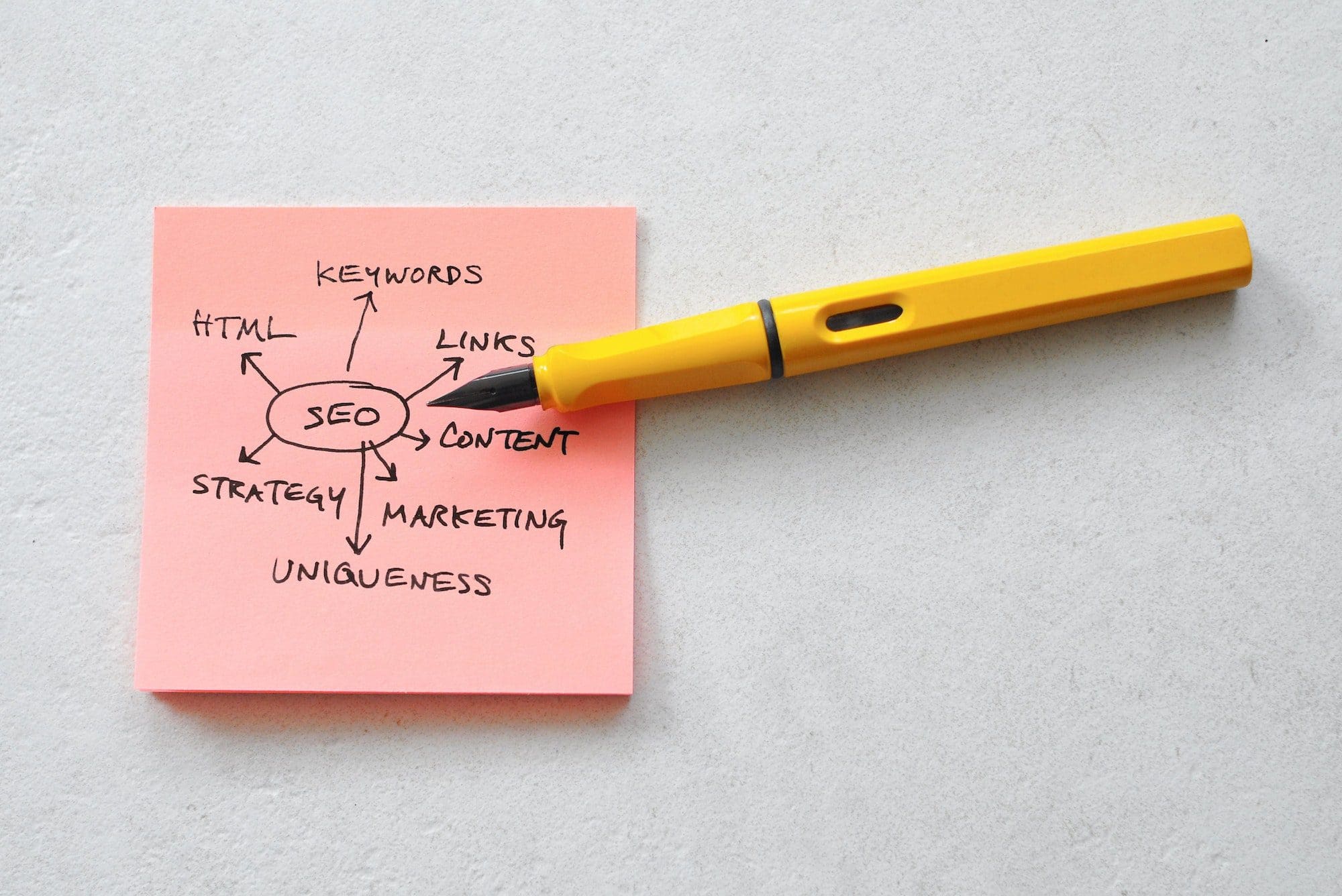In today’s digital age, a compelling online presence is not just a nice to have but a must for businesses of all sizes and industries. Two key pillars supporting this virtual presence are Search Engine Optimization (SEO) and Web Design. While SEO is the process of enhancing a website to make it more visible for relevant searches, Web Design is the aspect of creating an aesthetically pleasing and user-friendly website. Although they may seem like distinct disciplines, in reality, SEO and web design are tightly intertwined, each influencing and enhancing the other in profound ways.
SEO helps businesses reach their target audience by improving their website’s ranking on search engine results pages (SERPs). However, SEO doesn’t operate in isolation. It is profoundly impacted by the design of the website it’s trying to rank. A well-designed website not only attracts visitors but also keeps them engaged, reducing bounce rates and increasing the time spent on the site—two factors that Google considers when ranking websites.
Conversely, Web Design is not solely about creating a visually engaging interface. It’s about creating an interface that’s easy for search engines to understand and easy for users to navigate. This is where SEO comes into play, guiding the structure and layout of the website to ensure it’s as search-friendly as it is user-friendly.
In essence, SEO and Web Design are two halves of the same coin. When harmonized effectively, they can significantly enhance a business’s online presence, visibility, and, ultimately, its success. In the subsequent sections, we’ll delve deeper into how these two critical disciplines intersect and how businesses can optimize both for the most impactful results.
Stay tuned as we navigate the intricacies of SEO and Web Design, and learn how to leverage these strategies for your business’s online success.
The Intersection of SEO and Web Design
The convergence of SEO and Web Design might seem like a relatively recent phenomenon, largely owing to the rapid advancements in both fields. However, in reality, they’ve always been interconnected, shaping and guiding each other since their inception.
SEO and Web Design are like two cogs in the same machine – both are needed for the machine to function effectively. SEO is concerned with making a website discoverable by search engines and, by extension, the target audience. It involves strategies like keyword optimization, backlinking, and creating quality content.
On the other hand, Web Design is all about creating a visually appealing and intuitive website that ensures an excellent user experience. It involves making choices about layout, color schemes, font selection, and more.
But these two disciplines don’t exist in silos. They intersect and overlap in many ways. SEO strategies can influence the design choices you make. For instance, Google’s algorithm rewards mobile-friendly designs, which encourages designers to opt for responsive design. Conversely, the choices made during the design process can impact a website’s SEO. A slow-loading, poorly designed website can increase bounce rates and harm your SEO ranking.
In the context of local businesses, like those in Fort Wayne, Indiana, this interplay between SEO and Web Design becomes even more crucial. Here’s why: Local businesses may not have the vast resources of larger corporations, but they have a trump card – the ability to engage with their local community on a personal level. SEO and Web Design can help leverage this advantage, making your website not only easy to find for local customers but also attractive and user-friendly, increasing the chances that a casual visitor will convert into a loyal customer.
In essence, SEO and Web Design are different aspects of the same goal – creating an effective and engaging online presence. Businesses, whether in bustling metropolises or quieter locales like Fort Wayne, need to understand this intersection and learn how to navigate it effectively for their benefit. In the following sections, we will explore how different aspects of Web Design influence SEO and vice versa, providing actionable insights for businesses aiming to enhance their digital footprint.
Web Design Elements That Influence SEO
When designing a website, aesthetics and functionality must go hand in hand. A beautiful site that’s difficult to navigate won’t keep visitors around for long. Moreover, design choices can have far-reaching implications, not just for user experience (UX) but also for a website’s SEO performance. Let’s examine how these crucial elements of web design can significantly impact SEO:
- User Experience (UX): The layout and usability of a website have direct implications for SEO. An intuitive, well-designed website can lower bounce rates, as users find what they’re looking for more easily and stay longer on the site. This increased time on site is a positive signal to search engines, implying your website provides value to visitors, leading to better SERP rankings. Navigation structure, readability, and clear calls to action all contribute to a superior user experience, underlining the importance of these factors in web design.
- Mobile Responsiveness: With an ever-growing number of users accessing the web via mobile devices, having a mobile-responsive design is critical. A website that doesn’t display or function well on smartphones or tablets can frustrate users, leading them to abandon the site—a significant negative signal for SEO. Google, in particular, places substantial importance on mobile responsiveness and rewards mobile-friendly sites with higher rankings. As a result, web designers must prioritize mobile responsiveness to provide an excellent user experience and enhance SEO.
- Site Speed: The loading speed of a website is a crucial design element that significantly influences SEO. Internet users are increasingly impatient, with many abandoning a site if it doesn’t load within a few seconds. Slow-loading websites have higher bounce rates, which can negatively impact SERP rankings. Design aspects such as image size and format, the amount of JavaScript used, and server performance can all affect site speed. Therefore, optimizing these factors should be a priority in the design process.
These elements of web design highlight the critical intersection between web design and SEO. For businesses, including those based in Fort Wayne, Indiana, taking these factors into account during the design process can result in a website that not only looks great but also performs well in search engine rankings. In the next section, we’ll delve into how SEO elements can influence web design, further emphasizing the interconnectedness of these two disciplines.
SEO Elements That Influence Web Design
While we’ve seen how web design can shape a website’s SEO performance, the relationship goes both ways. SEO considerations can, and should, inform the design process. By understanding how certain SEO elements impact web design, businesses can create a website that is both aesthetically pleasing and optimized for search engines. Let’s explore some key SEO elements that can guide your web design:
- Content Layout: SEO isn’t just about including relevant keywords; it’s about how you structure your content. Web pages should be easy to read and navigate, with clear headings and subheadings, short paragraphs, and ample white space. This structure not only aids readability but also allows search engines to better understand and index your content, enhancing your SEO. Consequently, this requirement for structured content can impact the layout and design of a website.
- Use of Images and Videos: Images and videos can significantly enhance user engagement, keeping visitors on your site for longer periods, which is a positive signal for SEO. However, these elements must be SEO-friendly. This means using high-quality images and videos, optimizing file sizes to avoid slowing down your site, and using alt tags and captions for images. These SEO considerations can influence how and where you incorporate images and videos into your website design.
- “Above the Fold” Content: “Above the fold” refers to the portion of a webpage visible without scrolling. It’s a concept borrowed from the newspaper industry, but it’s equally relevant in the digital world. Search engines like Google place a lot of emphasis on this content when determining rankings. Consequently, it’s crucial to place the most important information and calls-to-action in this area. This emphasis on “above the fold” content can significantly impact the overall design and layout of your website.
These SEO elements underscore the intricate relationship between SEO and web design. Whether you’re a local business in Fort Wayne, Indiana, or a national corporation, understanding these interactions can help you create a website that is not just visually appealing but also SEO-optimized. In the next section, we’ll look at practical ways to leverage this interplay for the benefit of your online presence.
Balancing Web Design and SEO for Optimal Results
Creating a website that is both user-friendly and search engine optimized might feel like walking a tightrope. However, it’s more akin to constructing a well-balanced scale, where both aspects are essential and support each other. When aligned correctly, good web design and SEO can act synergistically to deliver the best results. Here’s how businesses can find this delicate equilibrium:
- Harmonizing Aesthetics and SEO: Web design isn’t just about creating a visually appealing website—it’s about creating a user experience that keeps visitors coming back. On the other hand, SEO isn’t just about packing a site with keywords—it’s about ensuring your website is navigable, informative, and structured in a way that search engines can understand. A visually appealing site without enough textual content might leave your visitors pleased but will do little for your search engine rankings. On the other hand, a website packed with keywords and information but lacking in visual appeal may not retain visitors for long, impacting your bounce rate and, in turn, your SEO. The key lies in harmonizing these elements. Creating a site that is visually engaging and provides value to the visitor will invariably lead to better search engine performance.
- Integrating SEO in Design Elements: Every design decision you make should factor in SEO. For example, using images and videos can enhance user engagement, but they need to be optimized for SEO. This includes using appropriate file formats, compressing file sizes, and using meaningful alt-texts. Similarly, your site architecture and navigation should be designed to be search engine friendly. Your main pages should be easily accessible, and your site should have a clear, logical hierarchy, helping search engines understand and index your site better.
- Balancing Global and Local SEO Considerations: If your business operates in a specific location or caters to a particular geographic audience, as is the case with businesses in Fort Wayne, Indiana, balancing global and local SEO becomes crucial. You should optimize your site content with local keywords. However, you should also pay attention to local user preferences when designing your site. If your audience primarily accesses your site from mobile devices, adopting a mobile-first design approach is a good idea. If your local audience speaks a different language, including multilingual support in your site design could help reach a broader audience.
- Leveraging Web Design for Link Building: Good design can also aid your SEO efforts by making your site more link-worthy. Websites with unique, appealing designs, and quality content can attract more backlinks, which is a significant factor in SEO rankings. Also, a well-designed, easy-to-navigate site encourages more social shares, which can indirectly boost your SEO by increasing your online visibility and traffic.
- Continuous Testing and Optimization: The web is an ever-evolving space. User preferences change, new design trends emerge, and search engine algorithms get updated. Balancing web design and SEO is not a set-it-and-forget-it affair—it requires continuous testing, analysis, and adjustment. Regular audits can help identify gaps in your SEO strategy or areas where your web design can be improved. By continuously testing different design and content elements, you can optimize your site iteratively and achieve incremental improvements in your SEO performance.
Balancing web design and SEO is both an art and science. It requires an understanding of design principles and SEO best practices, creativity to integrate these elements in a cohesive and appealing way, and analytical skills to measure the effectiveness and continuously optimize your strategy. By following the principles outlined in this section, businesses in Fort Wayne, Indiana, and elsewhere can build a strong, effective, and balanced online presence. In the next section, we’ll look at some examples of businesses that have successfully achieved this balance.
Conclusion
In this digital era, an effective online presence is not just a nice-to-have; it’s a must-have. Businesses across the globe, and in Fort Wayne, Indiana, are increasingly recognizing this fact. As we’ve explored throughout this article, at the heart of a strong online presence lies the intricate interplay between SEO and web design.
SEO and web design are not separate disciplines but two sides of the same coin. Both strive to create an engaging, user-friendly website that not only draws in visitors but also ranks well on search engine results pages. They complement and influence each other, shaping a website’s overall effectiveness and success.
The task of optimizing a website for search engines while ensuring an appealing, intuitive design might seem daunting. However, businesses don’t have to navigate this complex landscape alone. This is where a trusted partner like Digital Parameters can make all the difference.
Digital Parameters, based in Fort Wayne, Indiana, is the leading agency specializing in web design, SEO, and digital marketing. We understand the delicate balance between aesthetics and SEO, between user experience and search engine requirements. With a team of experienced professionals, we’ve helped businesses optimize their online presence, delivering websites that are not just visually stunning, but also SEO-optimized.
We know the local market inside out and can help businesses in Fort Wayne and other locations build an online presence that resonates with their target audience. Whether you’re looking to design a new website or optimize an existing one, Digital Parameters has the expertise and resources to help you succeed.
In the constantly evolving digital landscape, having a partner who stays ahead of the curve is invaluable. Digital Parameters continuously stays abreast of the latest trends and algorithm updates, ensuring our clients’ websites remain relevant and competitive.
In conclusion, creating a robust online presence requires a nuanced understanding of the relationship between SEO and web design. The strategies and insights provided in this article are a good starting point, but to truly leverage these for your business’s success, consider partnering with an experienced agency like Digital Parameters. With our expertise in web design, SEO, and digital marketing, we can help your business not only create a compelling online presence but also achieve its digital potential. Contact us today to learn more about how we can help you succeed in the digital world.












